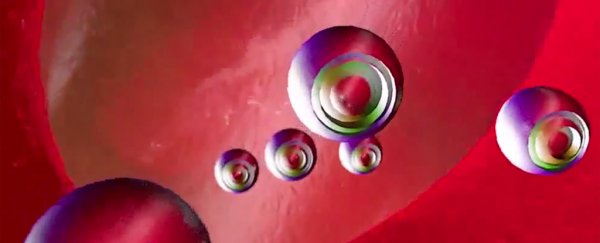A fleet of micromotor bots, each measuring half the width of a human hair, have been used to heal stomach ulcers in mice, the first time such bots have been used in experiments in living organisms.
Conventional antibiotic drugs taken orally can get blitzed and blunted by acids in the stomach, but these miniature bots have been shown to withstand the conditions in the gut and pilot themselves towards bacterial infections.
Five days of micromotor antibiotic treatment proved to be slightly more effective than using regular medicine, according to the team from the University of California, San Diego, and the next target is to investigate whether the approach could work for humans too.
"It's a one-step treatment with these micromotors, combining acid neutralisation with therapeutic action," says one of the researchers, Berta Esteban-Fernández de Ávila.
One of the smartest parts of the approach is that the tiny bots use the gastric acid for power – their magnesium cores react with the acid, producing hydrogen bubbles that propel the micromotors to their target.
The little bacteria busters are coated with other materials to offer protection and stick to stomach walls.
Not only does the chemical reaction give power to the micromotors, it also reduces acidity in the stomach. The antibiotic layer on board the bots is sensitive to that drop in acid levels, and gets released as a result.
The pH levels in the stomach then go back to normal after 24 hours, and the biodegradable micromotors are dissolved without any harmful residues left behind.
With regular stomach ulcer drugs taken through the mouth, patients are often also given proton pump inhibitors to suppress gastric acid so the drugs can do their work. The problem is, these inhibitors are linked to side effects like headaches, diarrhoea, and even depression.
Having something like this microscopic robot army working against disease would seem to be a much better solution, taking care of both the gastric acid and the bacterial infections at the same time.
It's going to take a while before the treatment can be safely adapted for humans to use, but many other scientists are also investigating how super-small robots can help and heal the human body – work that could help move the field forward in general.
The researchers behind this new study say there's still a "significant gap" between testing micromotors and other types of nanobots in a test tube, and actually getting them into living organisms, which is why this study is so significant.
At the same time the researchers are also keen to emphasise that it's early days for the technique, and they plan to run future tests using different combinations of drugs and different parts of the digestive system.
Other, larger animals could also be in line for tests before the all-clear is given for clinical trials with human patients.
"There is still a long way to go, but we are on a fantastic voyage," one of the team, Joseph Wang, told Timothy Revell at New Scientist.
The research has been published in Nature Communications.
The scientists also produced a video alongside their work, which you can see below:
